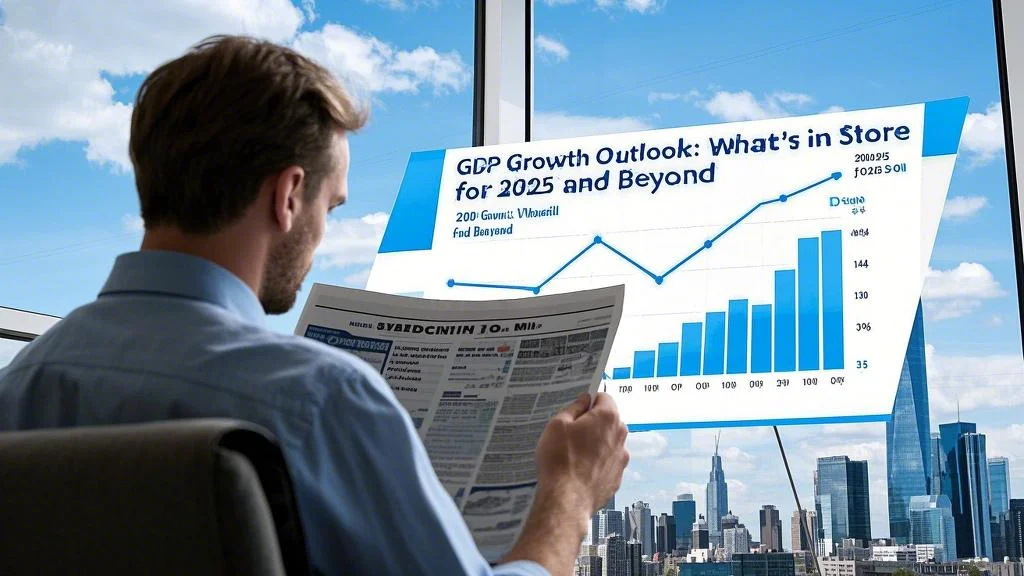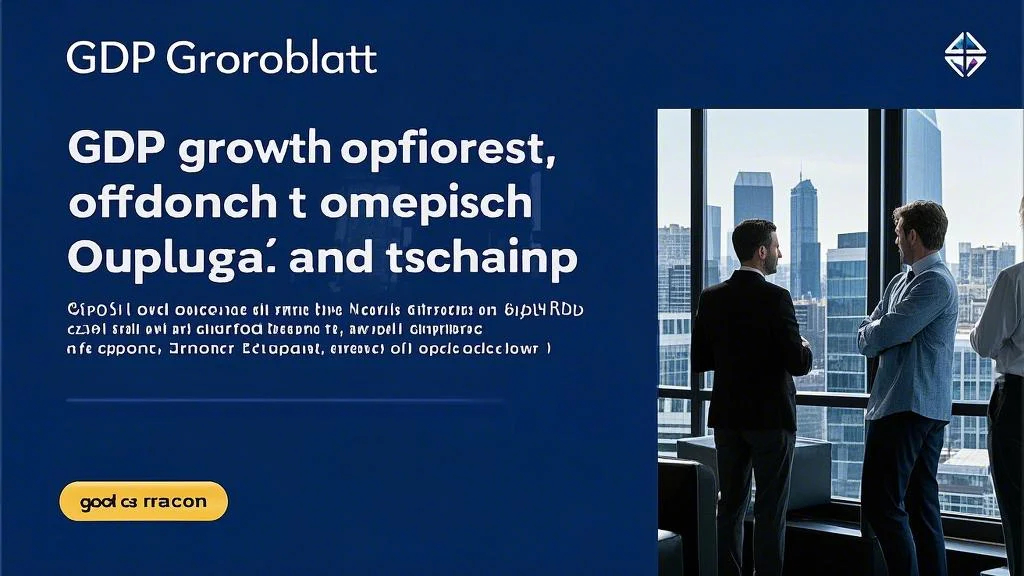GDP Growth Outlook: What’s in Store for 2025 and Beyond

Understanding the GDP Growth Outlook for 2025
The GDP growth outlook for 2025 is a topic of significant interest for investors, policymakers, and economists alike. Gross Domestic Product (GDP) is a key indicator of economic health, reflecting the total value of goods and services produced within a country. As we look ahead to 2025, several factors are expected to shape global GDP growth, including technological advancements, demographic shifts, and geopolitical developments. While some regions may experience robust growth driven by innovation and expanding middle classes, others could face challenges such as aging populations and resource constraints. Understanding the GDP growth outlook is essential for making informed investment decisions and anticipating economic trends that could impact various sectors and markets.
Global Economic Trends Influencing GDP Growth
The GDP growth outlook is closely tied to broader global economic trends. One of the most significant trends is the shift toward digital economies, as advancements in technology and the rise of e-commerce continue to transform industries. Additionally, the transition to renewable energy and sustainable practices is expected to drive growth in sectors like clean energy and green infrastructure. However, challenges such as inflation, supply chain disruptions, and geopolitical tensions could hinder economic expansion in certain regions. For investors, staying informed about these global economic trends is crucial for identifying opportunities and risks in the global market. By understanding the forces shaping GDP growth, you can better position your portfolio for long-term success.
Stock Market Forecast: How GDP Growth Impacts Equities
The GDP growth outlook has a direct impact on the stock market forecast, as economic expansion typically correlates with higher corporate earnings and investor confidence. In regions with strong GDP growth, sectors like technology, consumer discretionary, and industrials often outperform, driven by increased consumer spending and business investment. Conversely, slower GDP growth or economic contraction can lead to market volatility and underperformance in cyclical sectors. For investors, understanding the relationship between GDP growth and equity markets is essential for making strategic decisions. By aligning your portfolio with regions and sectors poised for strong economic performance, you can capitalize on growth opportunities while managing risks associated with economic downturns.

Economic Recession Predictions and Their Implications
While the GDP growth outlook for 2025 is generally positive, concerns about an economic recession persist. Factors such as rising interest rates, inflation, and geopolitical instability could potentially trigger a downturn. A recession typically leads to reduced consumer spending, lower corporate earnings, and increased market volatility. However, not all sectors are equally affected. Defensive sectors like healthcare, utilities, and consumer staples tend to hold up better during economic downturns, as demand for essential goods and services remains relatively stable. By staying informed about economic recession predictions and understanding how different sectors respond to economic challenges, you can adjust your investment strategy to mitigate risks and capitalize on opportunities.
The Real Estate Bubble: Risks and Opportunities in 2025
The GDP growth outlook also has significant implications for the real estate market, particularly in the context of a potential real estate bubble. Strong GDP growth can drive demand for both residential and commercial properties, leading to rising prices and increased construction activity. However, if growth slows or interest rates rise significantly, the real estate market could face challenges, such as reduced demand and declining property values. For investors, understanding the dynamics of the real estate bubble is essential for making informed decisions. Consider focusing on properties in high-demand areas or exploring real estate investment trusts (REITs) that specialize in recession-resistant sectors like healthcare and logistics. By aligning your real estate investments with the broader economic outlook, you can navigate potential risks and capitalize on growth opportunities.
Strategies for Investing in a Changing Economic Landscape
As the GDP growth outlook evolves, investors must adapt their strategies to navigate a changing economic landscape. One approach is to focus on high-quality companies with strong balance sheets and consistent cash flow, particularly in sectors poised for growth. Diversifying your portfolio across regions and asset classes can also help mitigate risks associated with economic uncertainty. Additionally, consider incorporating alternative investments like real estate, commodities, and infrastructure, which can provide stability and inflation protection. Regularly reviewing and rebalancing your portfolio is essential, as market conditions and economic outlooks can change rapidly. By staying informed about the stock market forecast and economic recession predictions, you can make proactive adjustments and position your portfolio for long-term success.
Conclusion: Preparing for the Future of GDP Growth
The GDP growth outlook for 2025 and beyond is shaped by a complex interplay of factors, including global economic trends, technological advancements, and geopolitical developments. By understanding these dynamics and staying informed about the stock market forecast and economic recession predictions, you can make informed investment decisions and build a resilient portfolio. Additionally, considering the risks and opportunities associated with a real estate bubble can further enhance your strategy. By taking a proactive and diversified approach, you can navigate the uncertainties of the global economy and position yourself for long-term financial success. The future of GDP growth is filled with both challenges and opportunities, and those who embrace it with knowledge and foresight stand to benefit the most.